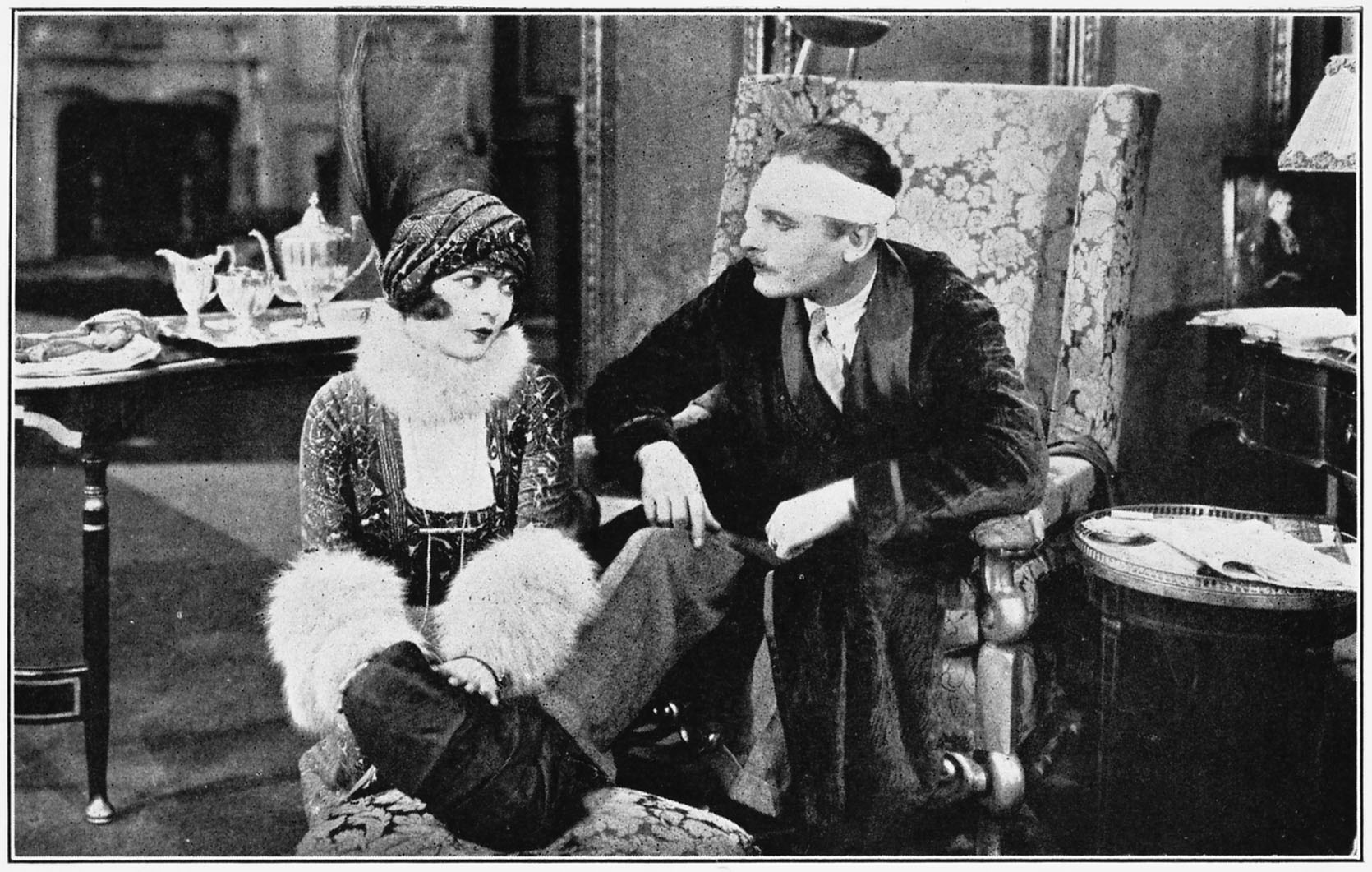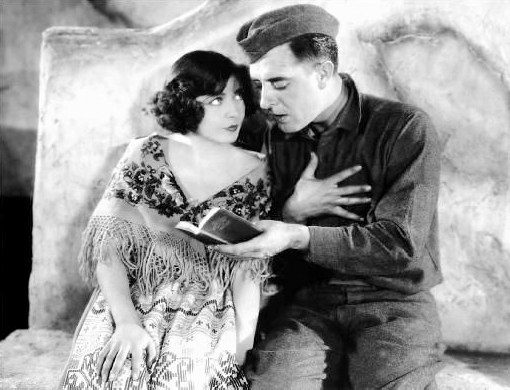1. Overview
Renée Adorée (born Jeanne de la Fonte[ʒɑ de lɑ fɔn.te]French) on 30 September 1898, was a French stage and film actress who achieved significant stardom in Hollywood during the silent film era of the 1920s. She captivated audiences with her performances, most notably in the acclaimed 1925 World War I epic The Big Parade, where she played Melisande opposite John Gilbert. Adorée's career, marked by a rapid ascent to fame and successful collaborations with leading actors like Gilbert and Ramón Novarro, was tragically cut short when she contracted tuberculosis in 1930. Despite efforts to recover, she succumbed to the illness on 5 October 1933, at the age of 35. Her contributions to cinema are commemorated with a star on the Hollywood Walk of Fame.
2. Early Life
Renée Adorée's early life was deeply intertwined with the performing arts, laying the foundation for her future career in film.
2.1. Childhood and Stage Performances
Born Jeanne de la Fonte in Lille, France, Renée Adorée was the daughter of circus artists. From a very young age, she regularly performed alongside her parents, touring across Europe as an acrobat, dancer, and bareback rider. Through these extensive tours, she honed her skills and adopted the stage name Renée Adorée, a name derived from French words meaning "reborn" and "adored" in their feminine forms. She built a strong reputation for her dancing prowess in countries including Belgium, France, Germany, and Sweden. She was performing in Brussels when World War I began in 1914.
2.2. Early Film Debut and Transition to Vaudeville
Adorée made her cinematic debut in 1918, appearing in the Australian film £500 Reward, where she was already billed under her professional name, Renée Adorée. At that time, she was actively touring Australia as a dancer on the Tivoli circuit with an act known as "The Magneys." Following her time in Australia, she moved to New York City in 1919. There, she quickly transitioned into vaudeville, joining the cast of a musical titled Oh, Uncle. This production premiered in Washington, D.C. in March 1919, then moved to Trenton, New Jersey, and subsequently toured throughout the summer. By July, the show was renamed Oh, What a Girl! and opened at the Shubert Theatre in New York City. Over the subsequent months, Adorée continued her stage career, touring in another Shubert production, The Dancer.
3. Film Career
Renée Adorée's film career primarily unfolded during the vibrant era of Hollywood silent cinema, where she quickly ascended to a prominent position.
3.1. Silent Film Stardom and Major Success
In January 1920, Renée Adorée seized the opportunity to advance her career in motion pictures when she was cast in the lead role for The Strongest, a dramatic photoplay written by French prime minister Georges Clemenceau and directed by Raoul Walsh. This role marked a pivotal step in her transition to the screen. She continued to star in several other silent films in the early 1920s, with her role in Reginald Barker's The Eternal Struggle, which also featured Barbara La Marr and Earle Williams, solidifying her status as a Hollywood star.


Adorée is most widely celebrated for her portrayal of Melisande in the highly successful melodramatic romance and war epic The Big Parade (1925), where she starred opposite John Gilbert. The film proved to be an immense commercial success for MGM, becoming one of the studio's highest-grossing silent films by earning between 18.00 M USD and 22.00 M USD, and significantly elevated Adorée to major stardom. Her collaboration with Gilbert was extensive, as she ultimately made nine films with him. She also shared the screen with another leading Hollywood actor, Ramón Novarro, in four productions. In 1927, she starred with the renowned actor Lon Chaney in the film Mr. Wu.
Beyond her film roles, Adorée was also a subject for prominent photographers of the era. In 1928, Ruth Harriet Louise captured her image for Eve: The Lady's Pictorial. Two years later, in 1930, Alfred Cheney Johnston photographed Adorée in the nude, contributing to her public image as a daring and modern figure. Notably, in the 1928 film The Mating Call, produced by Howard Hughes, Adorée also had a brief swimming scene in the nude, reflecting the evolving attitudes in cinema at the time.
3.2. Transition to Sound Films
With the emergence of sound in film, Renée Adorée demonstrated her adaptability. She was among the fortunate stars whose voice was deemed suitable for the new technological demands of the film industry, allowing her to continue her career into the sound era. Before her untimely death, she appeared in two all-talking films. By the close of 1930, Adorée had accumulated a filmography of forty-five movies, with her final four appearances being in sound productions.
4. Personal Life
Renée Adorée's personal life included two marriages, both of which ended in divorce. While in New York City on New Year's Eve 1921, she met Tom Moore, an established Hollywood actor who was fifteen years her senior. Moore, along with his brothers, was an Irish immigrant who had gained popularity in the film industry. Six weeks after their initial meeting, on 12 February 1921, Adorée and Moore were married at his residence in Beverly Hills, California. Their marriage, however, concluded in divorce in 1926. In June 1927, Adorée remarried, this time to William Sherman Gill. This second marriage was also brief, ending in divorce in 1929.
5. Illness and Death
Renée Adorée's vibrant career and life were tragically cut short by illness. In 1930, she received a diagnosis of tuberculosis, a serious infectious disease of the lungs. Despite her physician's medical advice, Adorée insisted on completing her final film, Call of the Flesh, in which she co-starred with Ramón Novarro. Immediately following the completion of the film, her health necessitated a move to a sanatorium located in Prescott, Arizona. For two years, she was confined to bed, lying flat on her back in an intensive effort to regain her physical health.
By April 1933, Adorée was able to leave the sanatorium, and at that point, it was widely believed that she had recovered sufficiently to resume her acting career. However, her health swiftly deteriorated, weakening day by day. In September 1933, as her condition worsened, Adorée was moved from her modest home in the Tujunga Hills to the Sunland health resort in Los Angeles. She died there on 5 October 1933, at the age of 35. Her remains were interred at the Hollywood Forever Cemetery. At the time of her death, Adorée's estate was valued at 2.43 K USD. As no will was discovered, her sole heir was determined to be her mother, who resided in England.
6. Tributes
For her significant contributions to the motion picture industry, Renée Adorée was honored with a star on the prestigious Hollywood Walk of Fame. Her star is located at 1601, Vine Street, serving as a lasting tribute to her legacy in Hollywood cinema.
7. Filmography
| Year | Title | Role | Notes |
|---|---|---|---|
| 1918 | £500 Reward | Irene | |
| 1920 | The Strongest | Claudia | Lost film |
| 1921 | Made in Heaven | Miss Lowry | Lost film |
| 1922 | Day Dreams | The Girl | Incomplete film |
| Honor First | Moira Serern | Lost film | |
| Mixed Faces | Mary Allen Sayre | Lost film | |
| Monte Cristo | Eugenie Danglars, her daughter | ||
| A Self-Made Man | Lost film | ||
| West of Chicago | Della Moore | Lost film | |
| 1923 | The Six-Fifty | Hester Taylor | Lost film |
| The Eternal Struggle | Andrée Grange | ||
| 1924 | The Bandolero | Petra | Lost film |
| Defying the Law | Lucia Brescia | Lost film | |
| A Man's Mate | Wildcat | Lost film | |
| Women Who Give | Becky Keeler | ||
| 1925 | Exchange of Wives | Elise Moran | |
| Excuse Me | Francine | Lost film | |
| Man and Maid | Suzette | Lost film | |
| Parisian Nights | Marie | ||
| The Big Parade | Melisande | ||
| 1926 | Blarney | Peggy Nolan | Lost film |
| The Flaming Forest | Jeanne Marie | ||
| La Bohème | Musette | ||
| The Blackbird | Mademoiselle Fifi Lorraine | ||
| The Exquisite Sinner | Silda, a gypsy maid | Lost film | |
| Tin Gods | Carita | Lost film | |
| 1927 | Back to God's Country | Renee DeBois | |
| Heaven on Earth | Marcelle | Lost film | |
| Mr. Wu | Wu Nang Ping | ||
| On Ze Boulevard | Musette | ||
| The Show | Salome | ||
| 1928 | A Certain Young Man | Henriette | Lost film |
| The Cossacks | Maryana | ||
| Forbidden Hours | Marie de Floriet | ||
| The Mating Call | Catherine | ||
| Show People | Herself | Cameo | |
| The Michigan Kid | Rose Morris | ||
| The Spieler | Cleo d'Alzelle | ||
| 1929 | The Pagan | Madge | |
| Tide of Empire | Josephita Guerrero | ||
| 1930 | Redemption | Masha | |
| Call of the Flesh | Lola |